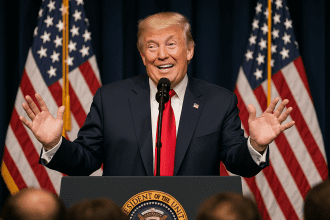The White House has indicated that President Donald Trump is ready to sign legislation reopening the federal government provided it passes the House of Representatives. Already cleared by the Senate, the bill seeks to end the record 2025 shutdown of the government and extend funding for federal operations.
Key Provisions of the Funding Bill
• Extends government funding at current levels through January 30, 2026.
• Provides full-year funding until September 30, 2026, for military construction, veterans’ affairs, the legislative branch, and the Department of Agriculture.
• Provides back pay for furloughed federal workers and rescinds recent notices of layoffs.
• Prevents further RIFs in federal agencies during the funding period.
• It includes a non-binding agreement to take a vote in December over continuing subsidies under the Affordable Care Act, although it does not promise passage.
Context Behind the Shutdown
It had reached a record as the longest shutdown on October 1, 2025. It has affected millions of people through disrupted government services, delays in air travel, and added strain to food assistance programs.
Political Landscape
• The White House memo blames “congressional Democrats” for the shutdown and frames this as a partisan failure.
• The bill passed the Senate on a vote of 60-40, including eight Democrats joining Republicans in a rare burst of bipartisanship.
• In the House, opposition remains from progressive Democrats over the ACA provision’s lack of guarantees.
• The legislation will probably need almost every Republican to show up on the floor in the midst of schedule complications resulting from the partial government shutdown.
What Comes Next
• Even if passed and signed, the deal is temporary. Funding expires again on January 30, 2026, creating the potential for renewed gridlock.
• ACA subsidy vote: This is expected in December and may be a flashpoint depending on partisan negotiations.
• While the move to end the shutdown might help to boost public confidence in government function, it exposes deeper issues about long-term fiscal strategy and partisan division.
Key Areas to Watch
• Whether the House votes today (Nov. 12) to approve the bill.
• Timing of President Trump’s signature, and whether the commitment is honored quickly. • Progress on the ACA subsidy vote and the broader healthcare debate. • Speed and efficiency of back pay distribution and service restorations for affected employees. • Political fallout, especially how parties message the resolution heading into 2026 elections.






















